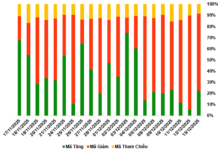When it comes to cooling down during the hot summer months, air conditioners are a popular choice. Like electric fans, air conditioners are effective at cooling spaces, providing quick and deep refrigeration. Operating an air conditioner is simple, as users can turn it on and off with the push of a button, select their desired mode, and adjust the temperature to their comfort level using the remote control.
However, many families do not realize that the placement of an air conditioner is a crucial factor in its effectiveness. Typically, air conditioners are installed on the wall of a room. For aesthetic or space-saving reasons, some people choose to install their air conditioners close to the ceiling. But is this a good idea? Read on to find out the experts’ evaluation and recommendations on this matter.
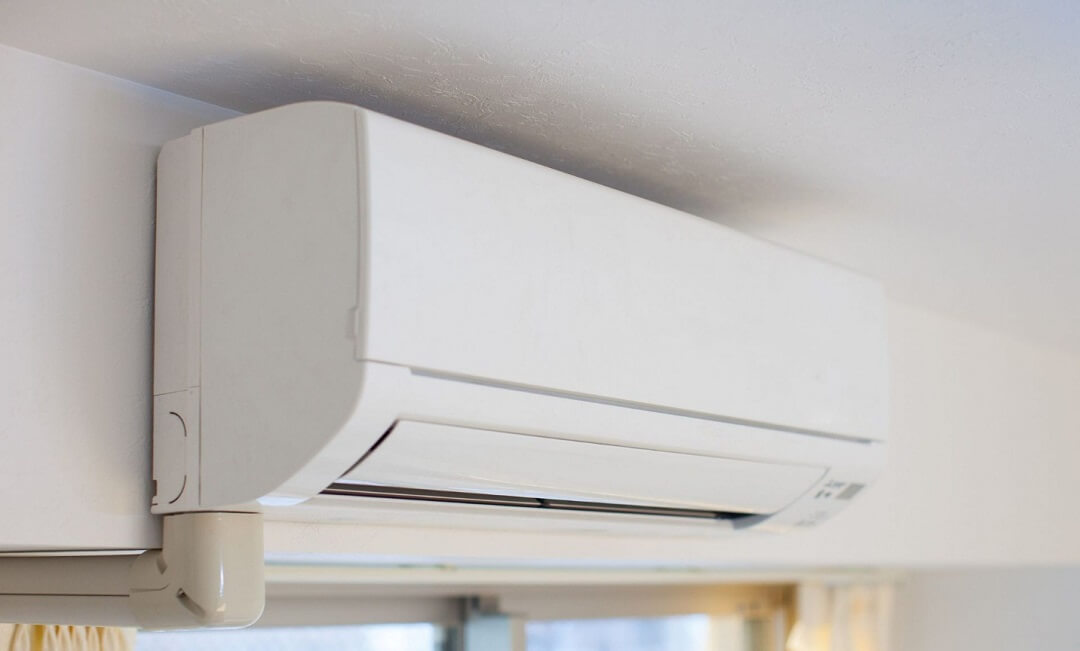
Is it okay to install an air conditioner too close to the ceiling? Many families wonder about this.
Expert Recommendations
In reality, installing an air conditioner too close to the ceiling is not advisable. This can not only impact its performance but also hinder its operation. According to experts, the standard guidelines for air conditioner installation suggest that the unit should be placed at a height of 9.2-10 feet (2.8-3 meters) from the floor and maintain a distance of at least 11.8 inches (30 cm) from the ceiling. For rooms or houses that cannot accommodate this height, it is still recommended to maintain a certain distance from the ceiling and avoid installing the unit too close to it.
If the air conditioner is installed too close to the ceiling, the cool air it blows will be directed upward, preventing even distribution throughout the space. Additionally, cleaning and maintaining the air conditioner may become more challenging, as the top of the unit is pressed against the ceiling, making it difficult to access and clean that area.
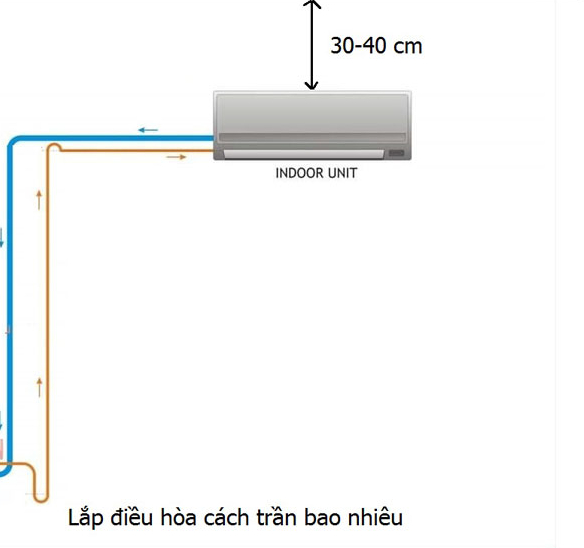
The ideal distance between the air conditioner and the ceiling is at least 11.8 inches (30 cm)
Alternatives for Families Who Prefer “Ceiling-Mounted” Air Conditioners
If your family still prefers to have the air conditioner close to the ceiling to optimize space and maintain aesthetics, there are alternative options to consider. Instead of a wall-mounted air conditioner, you can explore two other types: ceiling-mounted and concealed duct air conditioners. To make an informed decision, it is essential to understand the characteristics of these two types of air conditioners.
Ceiling-Mounted Air Conditioners
Ceiling-mounted air conditioners, also known as ceiling air conditioners, are designed to be installed close to the ceiling. Due to this unique installation method, the positioning of some components differs from that of a conventional wall-mounted air conditioner. Specifically, the return air grille is located at the bottom of the unit, and the cold air outlet of the evaporator is positioned at the machine’s side.
According to manufacturers and distributors, depending on the model and installation location, these air conditioners can have one to four air outlets, corresponding to the number of airflow directions. The operation of ceiling-mounted air conditioners is similar to that of conventional wall-mounted units. However, one advantage of this unique design is its ability to deliver more powerful airflow. Ceiling-mounted air conditioners typically have higher capacity than wall-mounted units, resulting in deeper cooling and a more refreshing space.
Distributors also emphasize the exceptional airflow distribution of ceiling-mounted air conditioners, with the ability to blow air up to 32.8 feet (10 meters). This makes them well-suited for large spaces and serving a high number of people. However, due to these characteristics, ceiling-mounted air conditioners tend to consume more energy and may produce louder noises due to the powerful airflow. They are suitable for installation in large public spaces or common living areas within a home.
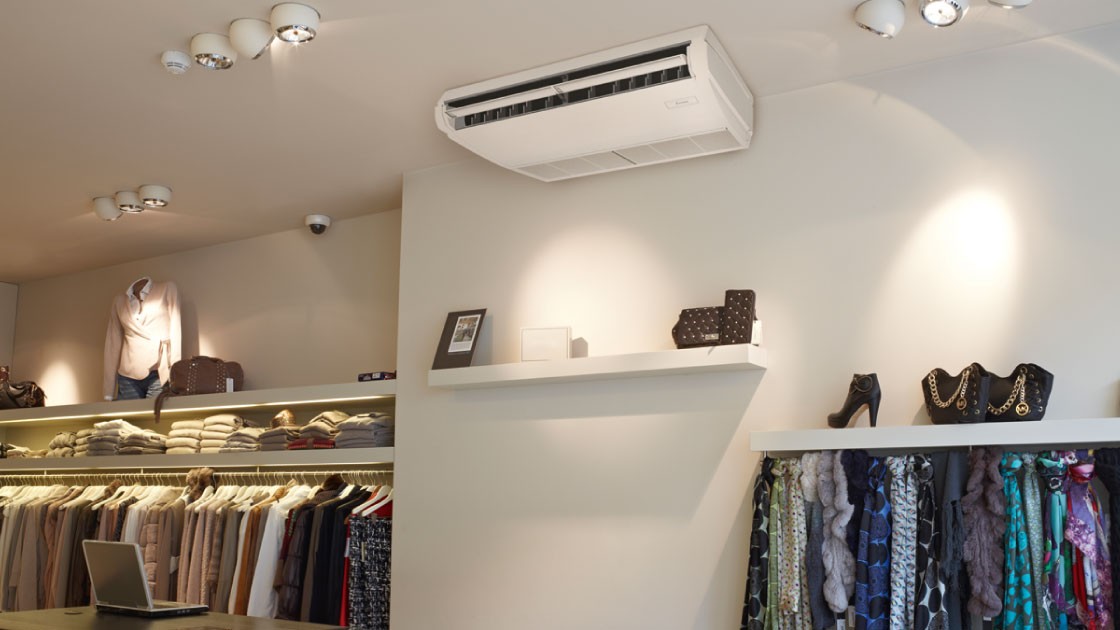
Ceiling-mounted air conditioners are ideal for large spaces and can accommodate a high number of people.
Concealed Duct Air Conditioners
True to their name, concealed duct air conditioners are designed to be installed in a concealed manner, either within the walls or ceiling. With this design, the evaporator is placed directly on the ceiling, distributing air through four outlets at the sides or blowing air in a 360-degree pattern. This ensures that the air is evenly distributed and effectively cools the entire space.
Concealed duct air conditioners are commonly found in a variety of spaces, including homes, offices, schools, and public areas with large gatherings. This is because they are available in a range of capacities, from low to high. They also enhance aesthetics and optimize space utilization.

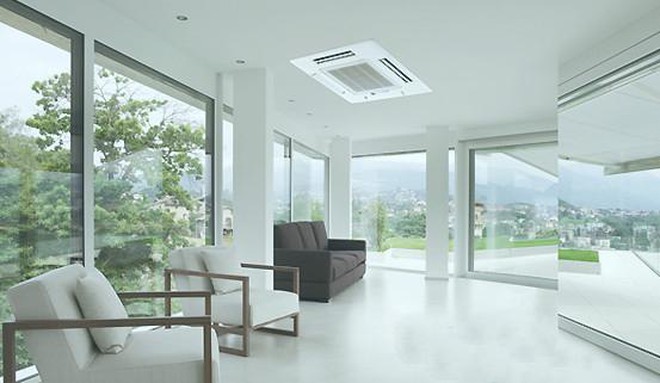
Illustration
However, due to the nature of their installation, concealed duct air conditioners are considered more challenging to clean and maintain than conventional wall-mounted units. Homeowners may not be able to perform these tasks themselves and will likely require the assistance of professional repair services. Additionally, concealed duct air conditioners tend to be more expensive than other types of air conditioners available in the market.




